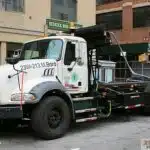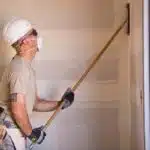As a fence installation permit specialist, it is my duty to ensure that homeowners are aware of the necessary permits required for their fence installation project. It is important to understand that the regulations and requirements for permits may differ from city to city or state to state, making it imperative for homeowners to conduct thorough research before starting any construction.
Installing a fence can be a great addition to your property as it enhances privacy, security, and aesthetic appeal. However, without proper permits, you could face legal issues and fines. In this article, we will discuss the various factors that determine whether or not you need a permit for your fence installation project. By understanding these factors, you can make informed decisions and avoid any potential legal complications in the future.
Understanding Local Permitting Regulations
As a fence installation permit specialist, it is crucial to understand the local permitting regulations in your area. These regulations vary by region and can impact the cost and timeline of your fence installation project. One important factor to consider is permitting fees, which can range from a few hundred dollars to thousands of dollars depending on the location and size of your project.
In addition to permitting fees, local government policies must also be taken into consideration when installing a fence. Some cities or counties have specific guidelines for fence height, material, and location. It is important to review these policies before beginning any construction to ensure that your fence meets all necessary requirements. Failure to comply with local regulations can result in costly fines or even legal action.
Overall, understanding local permitting regulations is essential for any successful fence installation project. By researching and complying with all applicable laws and policies, you can avoid unnecessary delays and expenses. In the following section, we will explore types of fences that may require permits, so you can navigate the process with confidence.
Types Of Fences That May Require Permits
As a fence installation permit specialist, it is important to understand that local permitting regulations vary depending on the area. In some cases, fence installations may be exempted from permits if they meet certain criteria. For example, low fences or decorative garden fences that do not exceed a certain height may not require permits. It is crucial to research and understand the specific exemptions in your area before beginning any fence installation project.
However, for more substantial fencing projects, permits may be necessary. This can include fences that exceed height restrictions or those built with materials that are not compliant with local building codes. It is important to note that installing a fence without proper permits can result in hefty fines and even legal trouble down the line. As a permit specialist, it is my responsibility to guide clients through the process of obtaining necessary permits and ensuring all regulations are met.
For those who are hesitant about going through the permitting process or want alternative options, there are various fence types available that do not require permits. These can range from temporary fences such as chain-link or plastic mesh to natural fencing options like hedges or shrubs. Each option has its own set of benefits and drawbacks, but it’s important for clients to weigh their options carefully before making a decision. Ultimately, regardless of whether you choose to pursue permits or explore alternative fencing options, it is essential to prioritize compliance with local regulations when it comes to installing a new fence.
Moving forward into our next section, we will dive deeper into another aspect of fence installation regulations: height and length restrictions. It’s crucial for homeowners and contractors alike to understand these restrictions in order to avoid costly errors during the installation process.
Height And Length Restrictions
Height and Length Restrictions are essential factors to consider when installing a fence. In many jurisdictions, municipalities have set rules and regulations that determine the maximum height and length of fences allowed on private property. These restrictions are put in place to ensure safety, protect privacy, and maintain the aesthetic value of the community.
For instance, some cities may allow for six-foot fences in residential areas while others allow eight feet or higher in commercial districts. It is important to note that these restrictions vary from one location to another; therefore, it’s vital to check with your local building department to determine what regulations apply. Failure to adhere to these rules can result in legal consequences such as fines or removal of the fence.
Permit exemptions may apply in specific cases where you do not require a permit. For example, if you are replacing an existing fence with one of similar size and material, no permit may be needed. However, if you want to build a new fence that exceeds the permitted height or length limit, you will need approval from the relevant authorities. In such cases, it is advisable to obtain a permit before commencing installation work.
- Important things to consider:
- Check with your local building department for height and length restrictions.
- Ensure that your proposed fence does not exceed these limits.
- Examine your property line accurately before installation.
- Confirming this will help avoid any legal consequences or disputes with neighbors.
With Height and Length Restrictions considered, we now move on to Setback Requirements. These requirements determine how far away from the property line one should install their fence.
Setback Requirements
A fence can add an extra layer of security, privacy, and aesthetic appeal to your property. However, it is important to know that installing a fence requires compliance with setback requirements. Think of setbacks as the buffer zone between your property line and the area where you can legally build structures. Like a referee in a football game, setbacks ensure that everyone plays fair and by the rules.
Setback requirements vary based on your location and zoning laws. Some areas may have setback exemptions for specific types of fences or properties. For example, agricultural land may have different setback requirements compared to residential areas. It is crucial to do your research or consult with a fence installation permit specialist to avoid any setbacks in installing your fence.
Property line disputes can arise when a neighbor believes that your fence is encroaching on their property. Setbacks help prevent these types of conflicts by clearly defining where you can install your fence. If you are unsure about property lines, consider getting a survey done before installing your fence. This will give you peace of mind and avoid any legal issues down the road regarding your fence’s position relative to property lines.
Moving forward, it is also essential to check if there are any neighborhood association or HOA rules regarding fences in your area. These rules may include height restrictions, color limitations, or even the type of materials used for fences. Knowing these rules beforehand will save you time and money in making adjustments to comply with regulations. Stay tuned for the next section about neighborhood association and HOA rules for more information on this topic!
Neighborhood Association And Hoa Rules
- Neighborhood Associations and Homeowners Associations (HOAs) both have rules and regulations that must be followed when installing a fence on a property.
- It is important to check with the local Neighborhood Association or HOA before beginning any fence installation projects to ensure that all rules and regulations are being followed.
- Depending on the location of the project, there may be additional permits required from the local municipality for the installation of a fence.
- It is recommended that the homeowner consult a fence installation permit specialist to ensure that all necessary permits and approvals have been acquired prior to the start of the project.
Neighborhood Associations
As a fence installation permit specialist, it is crucial to be aware of the neighborhood associations within your area. Neighborhood associations are groups of residents who come together to advocate for their community’s interests and improve their quality of life. They often have rules and regulations that govern what residents can and cannot do on their properties, including fence installation. Therefore, before installing a fence in your yard, it is essential to check with your neighborhood association about any specific requirements or restrictions.
Disputes resolution is another critical aspect of neighborhood associations that should not be overlooked when considering fence installation permits. In some cases, neighbors may have disagreements over the location or design of a fence, which could escalate into disputes. To prevent these conflicts from arising or escalating further, it is important to involve the neighborhood association in the decision-making process. The association can provide guidance on how to resolve disputes amicably and ensure that all parties involved are satisfied with the outcome.
Community involvement is yet another key factor in understanding whether you need a permit for fence installation. Neighborhood associations often have committees or boards made up of residents who are responsible for enforcing rules and regulations within the community. These committees may also be responsible for approving permits for fences or other property improvements. As such, it is important to engage with your neighborhood association and attend meetings regularly to stay informed about any changes or updates regarding fence installation permits or other community issues.
In conclusion, as a fence installation permit specialist, it is imperative to understand the role that neighborhood associations play in determining if you need permits for fence installation. Familiarizing yourself with these associations’ rules and regulations will help ensure that you comply with all requirements while avoiding any potential disputes with your neighbors. By actively engaging with your community through attending meetings and participating in decision-making processes, you can help foster a positive relationship between yourself and your neighbors while enhancing the overall quality of life within your neighborhood.
Hoa Rules
When it comes to fence installation permits, it is crucial for fence installation permit specialists to understand the role of HOA rules. Homeowner associations (HOAs) are entities that regulate and maintain common areas within a neighborhood or community. They also set rules and regulations that residents must follow in regards to property improvements, such as fence installations. Therefore, before installing a fence, it is important to check with your HOA about any specific requirements or restrictions.
One of the primary reasons for checking with your HOA is to obtain approval for your fence installation project. Many HOAs require residents to obtain approval before making any changes or improvements to their property. In some cases, failure to obtain approval can result in legal implications or fines. As a fence installation permit specialist, it is important to educate homeowners about these requirements and ensure that they obtain the necessary approvals before proceeding with their project.
Another reason why understanding HOA rules is essential when obtaining fence installation permits is that many HOAs have specific guidelines regarding the type and design of fences that are allowed within the community. These guidelines may include height restrictions, materials, and colors that can be used for fencing projects. By being aware of these rules and regulations, homeowners can avoid potential disputes with their HOA or neighbors while ensuring that their fence complies with all applicable guidelines.
In summary, understanding the role of HOA rules is critical when obtaining permits for fence installation projects. Homeowners must obtain approval from their HOA before proceeding with any property improvement projects, including fences. Additionally, by being aware of specific guidelines regarding fencing types and designs within their communities, homeowners can ensure compliance while avoiding disputes with their neighbors or HOAs.
Zoning And Land Use Regulations
Zoning and Land Use Regulations are important factors that must be considered before installing a fence. These regulations are in place to protect the community’s safety, ensure proper land use, and maintain property values. Zoning laws establish guidelines for what types of structures can be built on a property and where they can be located. It is crucial to consult with local zoning officials to determine if there are any restrictions or requirements regarding fence installation.
Permitting exemptions may apply depending on the type of fence being installed. For example, if the fence is less than six feet tall and not located near an intersection or public right-of-way, it may not require a permit. However, it is essential to check with local authorities to verify this information as each jurisdiction has its own specific requirements. In some cases, zoning variances may need to be obtained if a fence exceeds height limits or is installed closer to property lines than allowed by local ordinances.
In summary, understanding zoning and land use regulations is vital when installing a fence on your property. It is recommended that you seek professional advice from a fencing contractor or local zoning officials before beginning any fencing project. Additionally, it is important to be aware of permitting exemptions and zoning variances which may affect your project. Next up, we will discuss building codes and safety standards that must be followed when installing a fence on your property.
Building Codes And Safety Standards
- Building materials used in the construction of fences must meet local building codes and safety standards, and must be approved by local authorities.
- The installation of a fence requires inspection and approval by the local building department to ensure compliance with local codes and safety standards.
- An inspection of the fence installation must be performed by a qualified fence installation professional to confirm that the installation meets local codes and safety standards.
- The fence installation must be completed in accordance with the manufacturer’s guidelines to ensure proper construction and to protect the liability of the installer.
- The local building department may require that the fence installation be inspected again after completion to verify that it meets local codes and safety standards.
- The local building department may also require the fence installation to be bonded or insured to provide liability protection for the installer.
Building Materials
When it comes to installing a fence on your property, the first thing you need to consider is whether or not you need a permit. The answer to this question can vary depending on a number of factors, including the type of fence you want and the building codes and safety standards in your area. However, one key factor that often plays a role in determining whether or not a permit is needed is the building materials you plan to use.
Different building materials can have different requirements when it comes to permits for fence installation. For example, if you plan to use wood as your primary material, you may need a permit because of the potential fire danger posed by wooden fences. Similarly, if you plan to use metal or chain link fencing, there may be specific requirements related to height and other installation techniques that require a permit. And if you’re using composite materials or other modern options, there may be additional considerations to keep in mind.
As a fence installation permit specialist, my job is to help homeowners navigate these complex rules and regulations. I understand that installing a fence can be an important step in creating privacy and security for your home, but I also know that safety must always come first. That’s why I work closely with my clients to assess their needs and determine what permits might be required for their specific situation. By understanding the different building materials available and how they impact code compliance, we can ensure that your fence installation is done safely and legally – without any surprises or unexpected setbacks along the way.
Inspection Requirements
As a fence installation permit specialist, I am tasked with ensuring that homeowners comply with building codes and safety standards. One crucial aspect in this regard is the inspection requirements for fence installations. Inspection scheduling is needed to ensure that the installed fence meets the minimum standards set by local authorities. The purpose of an inspection is to verify that the installation complies with all relevant codes, including height restrictions, setback requirements, and other safety standards.
Homeowners must keep in mind that obtaining a permit does not guarantee compliance. Compliance requires adherence to all applicable regulations and guidelines from initial planning to final construction. Additionally, permits have expiration dates, and homeowners must apply for permit renewal if their project extends beyond the original completion date. Permit renewal helps ensure ongoing compliance with any changes to building codes or safety standards since the original permit application.
In conclusion, inspection scheduling and permit renewal are essential steps in maintaining compliance with building codes and safety standards during fence installation projects. As a fence installation permit specialist, my goal is to help homeowners navigate these requirements seamlessly while ensuring that their installation meets all relevant regulations. By doing so, we can guarantee safe and legal installations that provide privacy and security for your home for many years to come.
Liability Protection
As a fence installation permit specialist, my role extends beyond ensuring that homeowners comply with building codes and safety standards during their projects. It also entails emphasizing the importance of liability protection for both the homeowner and contractor. Liability protection refers to insurance coverage that protects against potential legal obligations resulting from accidental property damage or personal injury.
Homeowners should always verify that their contractor has sufficient liability insurance coverage before starting any fence installation project. In addition, contractors must ensure that they have proper licensing, permits, and insurance coverage to protect themselves from legal liabilities resulting from accidents or disputes during the project’s execution. Failure to obtain adequate insurance coverage can lead to costly lawsuits and financial damages for both parties involved.
In conclusion, liability protection is an essential aspect of any fence installation project. As a fence installation permit specialist, it is my responsibility to educate homeowners about the importance of verifying contractor insurance coverage and ensuring compliance with relevant building codes and safety standards. By doing so, we can guarantee safe and legal installations that provide privacy and security while protecting all parties involved from potential legal liabilities.
Electrical And Plumbing Considerations
When it comes to fence installation, there are several electrical and plumbing considerations that must be taken into account. One of the most important factors is grounding considerations. Your fence may need to be grounded in order to ensure that it meets local safety codes and regulations. This is especially true if your fence is going to be installed near power lines or other electrical equipment.
Another important consideration when it comes to fence installation is water line precautions. If you have a sprinkler system or other underground water lines on your property, it’s important to take steps to protect them during the installation process. This may involve marking the location of any water lines before digging begins, or taking other precautions to prevent damage to these systems.
Overall, electrical and plumbing considerations are an important part of any fence installation project. By taking the time to carefully consider these factors, you can ensure that your new fence meets all local codes and regulations while also protecting your property from potential damage. In the next section, we’ll take a closer look at some historic district requirements that may impact your fence installation project.
Historic District Requirements
Historic District Requirements: Fence installation permit specialists must be aware of the specific historic district requirements in their area. These districts are designated by local or state governments to protect and preserve the historical character of certain neighborhoods. When installing a fence in a historic district, there may be additional steps and regulations that need to be followed to ensure that the installation does not negatively impact the historic aesthetic.
Preservation concerns are a top priority when it comes to fence installations in historic districts. This means that any new fence must blend in with the existing architecture and design of the surrounding buildings. Preservation concerns can also extend to materials used for fencing, as some materials may not be appropriate for use in a historic district due to their negative impact on the environment or their inability to match existing structures.
Design restrictions are another important factor when installing a fence in a historic district. Depending on the specific requirements of the district, there may be limitations on fence height, style, and color. It is important for fence installation permit specialists to work closely with property owners and adhere strictly to design restrictions in order to avoid any potential conflicts or issues with regulatory bodies.
When considering whether or not permits are required for fence installation within a historic district, it is crucial for property owners and permit specialists alike to take into account preservation concerns and design restrictions. By understanding these factors, they can ensure that any new fences installed will complement and enhance the unique character of these special neighborhoods.
As we move forward with our discussion regarding fence installation permits, it is important to also consider environmental impact assessments.
Environmental Impact Assessments
Ensuring that your fence installation adheres to environmental impact mitigation protocols is a crucial aspect of the permit application process. As a fence installation permit specialist, it is my duty to inform you of the potential risks and negative consequences that could arise from improper environmental impact assessment. These consequences include damage to ecosystems, degradation of soil quality, and harm to wildlife.
It is important to note that certain types of fences may be exempt from requiring permits for environmental impact assessments. For instance, low-impact fences made from materials such as vinyl or plastic may not require permits as they pose minimal risk to the environment. However, it is always advisable to consult with a fence installation specialist and obtain all necessary information before proceeding with any construction work.
Permit exemptions aside, it is essential that every fence installation project undergoes an environmental impact assessment. This assessment evaluates the potential effects of the construction on the environment and allows for adequate measures to be taken in order to mitigate any negative impacts. By following these guidelines, we can ensure that our actions do not cause irreversible harm to our planet’s ecosystems.
Cost And Processing Time For Permits
- The cost of permits varies depending on the type of fence, the region in which it is being installed, and any zoning rules that must be met.
- Typical processing times for permits range from three to 10 business days, however, these may be longer in some cases.
- In order to obtain a permit, applicants must provide detailed information about the proposed fence, including measurements, materials, and any additional features such as gates.
- All permits require proof of ownership and must be signed by the owner or owner’s representative.
- Applicants should be aware that certain permits may also require additional documents such as surveys or drawings.
- A permit specialist can assist in determining the required documentation and provide cost estimates for the permit.
Costs Of Permits
As a fence installation permit specialist, it is important to understand the costs of permits when determining if you need one for your project. Permitting fees can vary depending on location, type of fence, and other legal requirements. As such, it is crucial to research the specific regulations in your area to avoid any potential fines or legal issues.
In addition to the cost of the permit itself, there may be additional costs associated with obtaining a fence installation permit. For example, you may need to hire a licensed contractor or engineer to create plans and specifications for your fence. These professionals will likely charge a fee for their services, which should also be factored into the overall cost of your project.
While it may seem like an added expense and hassle to obtain a fence installation permit, doing so can ultimately save you time and money in the long run. By ensuring that your fence meets all legal requirements and safety standards, you can avoid potential fines or having to redo work that does not meet code. Additionally, having a properly permitted fence can increase the value of your property and provide peace of mind knowing that you have taken all necessary steps to protect yourself and your community.
Processing Times For Permits
As a fence installation permit specialist, understanding the processing times for permit applications is crucial in ensuring that your project runs smoothly. The time it takes to obtain a permit can vary depending on several factors. For instance, the complexity of the project, the completeness of the application, and the workload of local government agencies can all affect processing times. As such, it is essential to have a clear understanding of these factors to develop strategies for expediting permit processing times.
One factor affecting processing times for permit applications is the completeness of the application. Incomplete applications often require additional information or documentation, which can delay review and approval processes. Therefore, as a permit specialist, it is vital to ensure that all necessary information and documentation are provided when submitting an application. This includes detailed plans and specifications for the proposed fence, as well as any required permits or licenses.
Another strategy for expediting permit processing times is to establish good communication with local government agencies responsible for issuing permits. Frequently checking in with these agencies and providing regular updates on your project’s progress can help identify any issues early on and prevent potential delays. Additionally, having a good working relationship with local officials can help streamline the approval process by building trust and cooperation between parties involved.
In summary, while there are various factors affecting processing times for permit applications, being proactive in providing complete and accurate information while establishing communication with local government agencies are effective strategies in expediting approval process times. As a fence installation permit specialist seeking quick turnaround times for permits will not only benefit you but also your clients who desire timely execution of their projects.
Documentation Requirements For Permits
When obtaining a permit for fence installation, it is essential to understand the documentation requirements set by local government agencies. The permitting process requires specific documentation that varies depending on the location and type of project. As a fence installation permit specialist, it is crucial to stay informed about these requirements and ensure that all necessary documents are provided in a timely and accurate manner.
Some of the required documentation for permits may include detailed plans and specifications for the proposed fence, proof of insurance, property surveys, zoning information, and environmental assessments. Without these documents, permit applications can be delayed or even denied. Therefore, it is vital to carefully review each requirement before submitting an application to ensure that all necessary documentation is included.
Furthermore, as a fence installation permit specialist seeking quick turnaround times for permits, providing complete and accurate information will not only expedite processing times but also help build trust with local government agencies responsible for issuing permits. By ensuring that all required documentation is provided upfront, you demonstrate your commitment to following regulations while streamlining the approval process for your clients. Ultimately this will help serve them better by delivering timely execution of their projects.
Permit Application Process
As we have discussed in the previous section, obtaining a permit is an essential step before installing a fence. The cost and processing time of permits differ according to your location and the type of fence that you plan to install. However, it is important to note that permit application fees are typically nominal and will not significantly impact your budget.
When applying for a permit, there are several required documents that you need to submit. These may include fence specifications, site plans, property surveys, and other relevant information. It is crucial to ensure that all documentation is complete and accurate as missing or incorrect information can delay the approval process.
To avoid common permitting mistakes, it is best to work with a reputable fence installation company or consult with a permit specialist. Some common errors include submitting incomplete applications, not including all necessary documentation, failing to meet zoning requirements, and violating building codes. By taking the time to understand the permit application process and working with professionals who can guide you through it, you can ensure that your fencing project proceeds smoothly without any delays or fines.
Moving forward into our next section about common permitting mistakes to avoid, it is crucial to understand why these mistakes occur and how they can be prevented.
Common Permitting Mistakes To Avoid
When it comes to fence installation, obtaining the necessary permits is crucial. Unfortunately, many homeowners make common permit mistakes that can delay or even halt their project. To avoid these permitting challenges, it’s important to understand what they are and how to prevent them.
One of the most common mistakes homeowners make is assuming that they don’t need a permit for their fence installation. However, depending on where you live and the specifics of your project, a permit may be required. Not obtaining one can result in costly fines or even having to remove the fence altogether.
Another mistake homeowners make is not providing all of the necessary information when applying for a permit. It’s important to thoroughly read and understand the requirements before submitting your application. Providing incorrect or incomplete information can cause delays in processing your permit and ultimately delay your project’s completion.
Numeric list:
- Research local zoning laws and regulations before starting your project
- Obtain all necessary permits before beginning work
- Provide accurate and complete information on permit applications
- Understand any specific requirements for fence height, location, or materials
To ensure a smooth permitting process for your fence installation project, it’s essential to avoid these common mistakes. By doing so, you can save yourself time, money, and stress in the long run.
Transition sentence: Now that you understand how to avoid common permitting mistakes, let’s discuss why hiring a professional fence contractor can benefit both you and your community.
Hiring A Professional Fence Contractor
When it comes to fence installation, hiring a professional contractor is often the best option. However, finding a reputable and reliable contractor can be challenging. One way to find potential contractors is through online searches or local directories. It is important to evaluate each contractor based on their experience, qualifications, and customer reviews.
Once you have a list of potential contractors, it’s time to gather quotes for the project. It’s essential to obtain multiple quotes from different contractors to compare prices and services offered. Be sure to ask questions about any additional fees or charges that may not be included in the initial quote. Evaluating quotes will help you determine which contractor provides the best value for your money.
In summary, hiring a professional fence contractor can save you time and ensure quality workmanship. When searching for contractors, take the time to research qualifications and read customer reviews. Obtaining multiple quotes will allow you to make an informed decision about which contractor best fits your needs and budget. In the next section, we will discuss how staying compliant with local regulations is crucial when installing a fence on your property.
Staying Compliant With Local Regulations
Imagine a world where you could build fences without worrying about permits and regulations. It would be a dream come true, right? Unfortunately, that is not the case in most places. Fence installation is often regulated by local authorities, and failure to comply with the rules can result in hefty fines or even legal action. As a fence installation permit specialist, it is my duty to ensure that homeowners understand the importance of staying compliant with local regulations.
The first step towards staying compliant with local regulations is understanding permit exemptions. In some cases, small fences may not require permits as long as they are within certain height and length restrictions. However, it is important to note that these exemptions vary depending on location and other factors such as proximity to public utilities or historical sites. As such, it is always best to seek advice from local authorities before starting any fence installation project.
Seeking legal advice is another crucial aspect of staying compliant with local regulations. There are instances where homeowners may disagree with the requirements set by local authorities or face issues during the permit application process. In such cases, seeking legal advice can help them navigate through any legal hurdles they may encounter. Additionally, lawyers specializing in building and zoning laws can provide valuable insights on how to stay compliant while still achieving your desired fence design.
In summary, understanding permit exemptions and seeking legal advice are essential when it comes to staying compliant with local regulations for fence installation projects. As a homeowner looking to install a fence, it is important to recognize that compliance goes beyond just getting permits – it also involves adhering to height restrictions, setback requirements, and other guidelines set by your local authorities. By following these rules diligently, you can create a safe and attractive fencing solution for your property while avoiding any unnecessary penalties or legal action.
Conclusion
In conclusion, it is imperative to understand the local permitting regulations before starting any fence installation project. The process may seem daunting, but it is vital to ensure that the fence meets all requirements and complies with local regulations. Failure to comply with these regulations can lead to legal complications and costly fines.
It is essential to note that different types of fences may require permits depending on the area’s zoning laws. Additionally, height and length restrictions, setback requirements, neighborhood association and HOA rules must be considered when installing a fence. By hiring a professional fence contractor who understands the permitting process and ensuring compliance with local regulations, you can avoid common mistakes and ensure a successful installation process. Staying compliant with local regulations will give you peace of mind knowing that your fence is not only aesthetically pleasing but also safe and legally compliant.
Image Credits
- “Permit Required to Take This Picture” by The Searcher (featured)



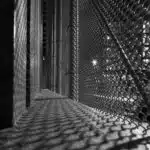

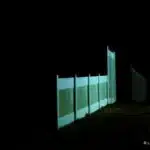







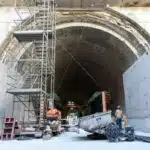
![How To Build A Detached Deck 14 Force Reconnaissance Detachment Deck Shoot [Image 4 of 4]](https://green-life.blog/wp-content/uploads/2023/05/RJo3tlizSGjq-150x150.jpg.webp)


